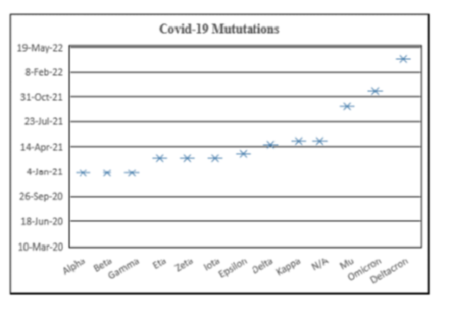


Indian Journal of Science and Technology
Year: 2022, Volume: 15, Issue: 21, Pages: 1022-1031
Original Article
Dr. Saeed Q Al-Khalidi Al-Maliki1*, Dr. Prakash Kuppuswamy2*, Dr. Rajan John3, Dr. Nithya Rekha Sivakumar4
1Department of MIS, College of Business, King Khalid University, Abha, KSA
2Computer Networks Engineering Department, College of CS & IT, Jazan University, Jazan, KSA
3Department of Computer Science & Engineering, College of CS & IT, Jazan University, Jazan, KSA
4Department of Computer Sciences, College of Computer and Information Sciences, Princess Nourah Bint Abdulrahman University, P.O. Box 84428, Riyadh 11671, Saudi Arabia
*Corresponding Author
Email: [email protected]
[email protected]
Received Date:15 February 2022, Accepted Date:23 April 2022, Published Date:09 June 2022
Objectives: This research article aims to identify the level of further mutations of COVID-19 and its vulnerability. Healthcare workers are urged to take precautionary measures to prevent further damage to their community and to avoid further human deaths. At this stage, it is crucial to study, analyze, and understand the COVID-19 variant mutation. Methods: The mutation of COVID- 19, however, has not yet been validated for the way in which it affects the risk of underlying comorbidities. It may be possible to tackle this challenge by using artificial intelligence, machine learning, and deep learning algorithms. We have used the J48 algorithm and the Linear Regression algorithm. These algorithms were then analyzed based on the accuracy they provided after running them in the output window of WEKA data mining. Findings: In this paper, machine learning is used to help clinicians and medical researchers understand COVID- 19 variant mutations at various stages. Artificial intelligence-based algorithms provide a better understanding of COVID-19 stages and vulnerability levels. Novelty: Artificial intelligence can be a valuable tool for healthcare operations in this pandemic situation. Moreover, healthcare professionals and a data analysis algorithm will probably arrive at the same conclusion based on the data set. However, the use of machine learning-based techniques described in this article will allow for quicker and earlier diagnosis of any type of pandemic situation in the future.
Keywords: COVID19; Machine Learning; Mutation; Variant; Coronavirus; SARSCoV2; Prediction algorithm etc
© 2022 Al-Maliki et al. This is an open-access article distributed under the terms of the Creative Commons Attribution License, which permits unrestricted use, distribution, and reproduction in any medium, provided the original author and source are credited.
Published By Indian Society for Education and Environment (iSee)
Subscribe now for latest articles and news.